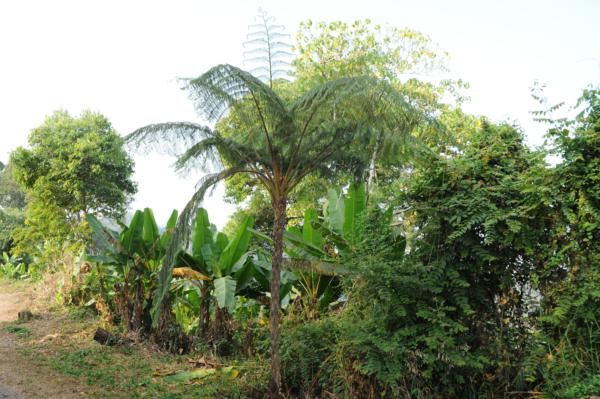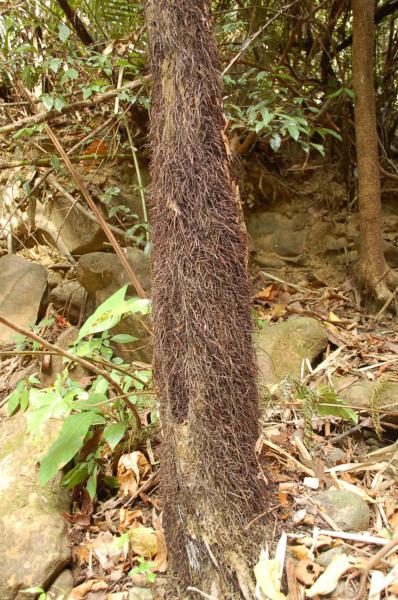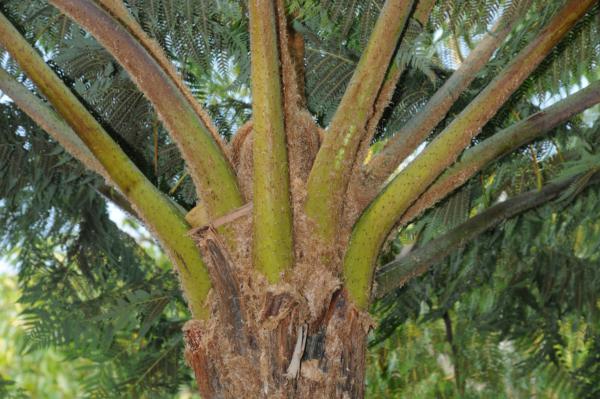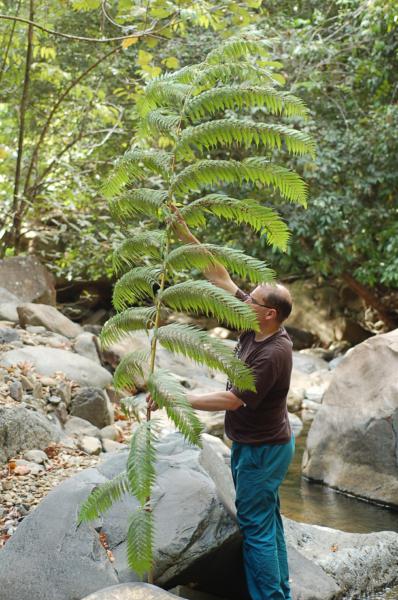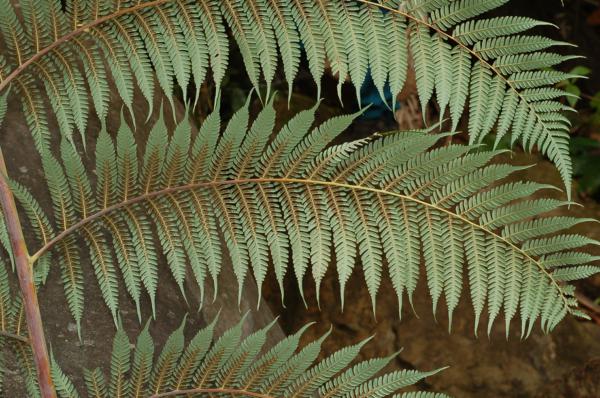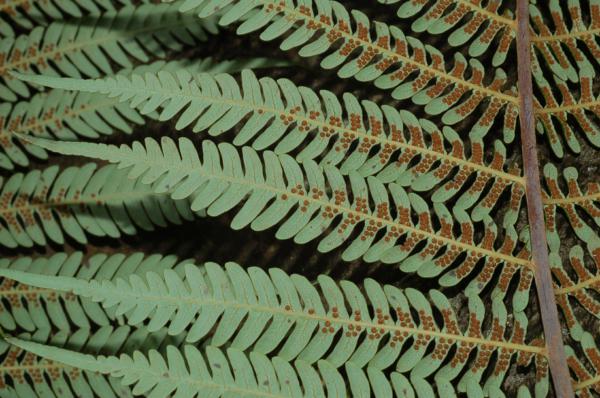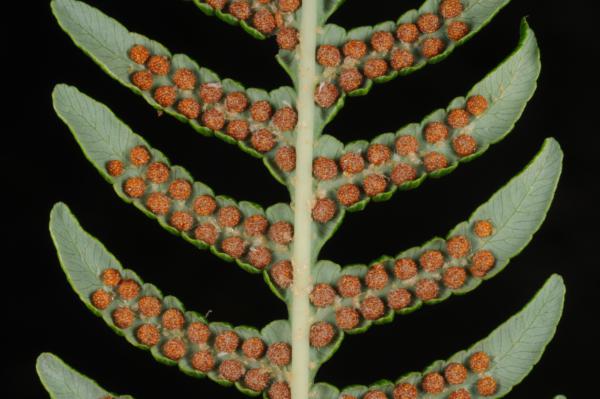
Cyathea contaminans (Wall. ex Hook.) Copel.
Family
Cyatheaceae
Nomenclature
Cyathea contaminans (Wall. ex Hook.) Copel., Philipp. J. Sci. 4: 60. 1909; Tardieu & C.Chr., Fl. Indo-Chine 7(2): 86. 1939; Holttum, Rev. Fl. Malaya ed. 1, 2: 119. 1955 [‘1954’]; Holttum, Fl. Males., Ser. II, Pterid. 1: 135. 1963; Holttum, Kew Bull. 19: 485. 1965; Tagawa & K.Iwats., SouthE. Asian Stud. 3(3): 74. 1965; Tagawa & K.Iwats., SouthE. Asian Stud. 5: 46. 1967; Tagawa & K.Iwats., Fl. Thailand 3: 106. 1979; Boonkerd & Pollawatn, Pterid. Thailand: 45, 113. 2000; Newman et al., Checkl. Vasc. Pl. Lao PDR: 26. 2007. – Alsophila contaminans Wall. ex Hook., Sp. Fil. 1: 52, t. 18B. 1844.
Chonophora glauca Blume, Enum. Pl. Javae.: 243 1828, non Cyathea glauca Bory 1804. – Alsophila glauca (Blume) J.Sm., J. Bot. 3: 419. 1841; Bedd., Handb. Ferns Brit. India: 12 1883, p.p. – Sphaeropteris glauca (Blume) R.M.Tryon, Contr. Gray Herb. 200: 21. 1970.
Description
Trunks up to 10 m or more tall. Stipes up to 60 cm or more long, stout, strongly thorny, purplish, glaucous, scaly near base; scales light brown to paler, to 4 cm long, 3 mm broad, thin, bearing short darker setae at margin; main rachis spiny, glaucous or brown, glabrescent; pinnae up to 80 cm or more long, 30 cm wide, lower ones lightly reduced in size; pinna-rachis light brown or paler, spiny beneath, glabrescent or hairy on upper surface; pinnules about 2.5 cm apart, lanceolate acuminate at apex, subtruncate at base, sessile, patent, almost straight, up to 15 cm long, 2.5 cm wide, deeply lobed almost to costa, a few lowest segments quite free; segments oblique, falcate, round to moderately acute at apex, up to 1.5 cm long, 4.5 mm broad, 5–6 mm apart, crenate at margin; costae and costules glabrous or very sparsely hairy near apices of pinnules, scales rarely residual, small, pale, not bullate; papyraceous, green, glaucous beneath, veins forked, distinct beneath. Sori nearer to costule than to edges of lobes, exindusiate; receptacles large, prominent .
Distribution in Thailand
NORTH-EASTERN: Loei; SOUTH-WESTERN: Phetchaburi; SOUTH-EASTERN: Trat; PENINSULAR: Phangnga, Nakhon Si Thammarat, Trang, Satun.
Distribution in Laos
Khammouane, Xieng Khouang.
Wider Distribution
N India and Malesia.
Ecology
On mountain slopes or stream banks in dense tropical eyergreen forest or in open areas at low altitudes.
Proposed IUCN Conservation Assessment
Least Concern (LC). Although Cyathea species are often exploited for the horticultural industry (mainly for their trunks as a base for epiphytic orchids) this species is widespread and not noticeably being adversely impacted. Monitoring is necessary.
Notes
Fibrous trunk used for orchid media.
Voucher specimens - Thailand
Middleton et al. 5124, Loei, Phu Suan Sai National Park (E); Middleton et al. 4787, Phetchaburi, Kaeng Krachan National Park (E); Middleton et al. 4639, Trat, Namtok Khlong Kaeo National Park (E).
Habit
Crown
Trunk
Top of trunk and bases of stipes
Stipe with scales and spines
Frond
Pinnae
Pinnules
Venation
Sori
Site hosted by the Royal Botanic Garden Edinburgh. Content managed by Stuart Lindsay, Gardens by the Bay, Singapore and David Middleton, Singapore Botanic Gardens. Last updated 24 January 2012
